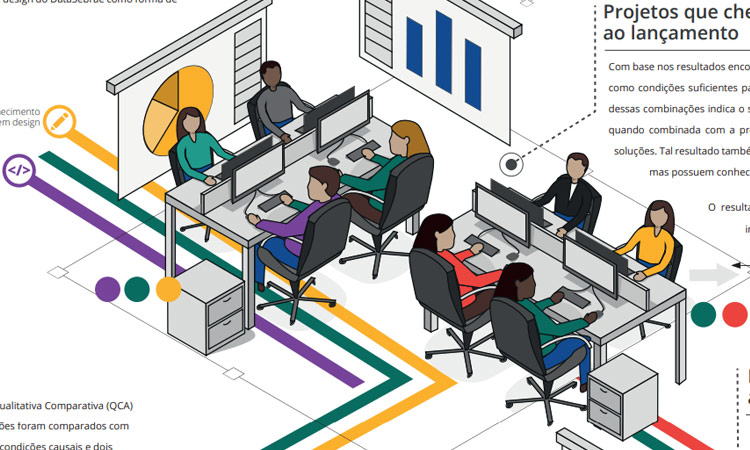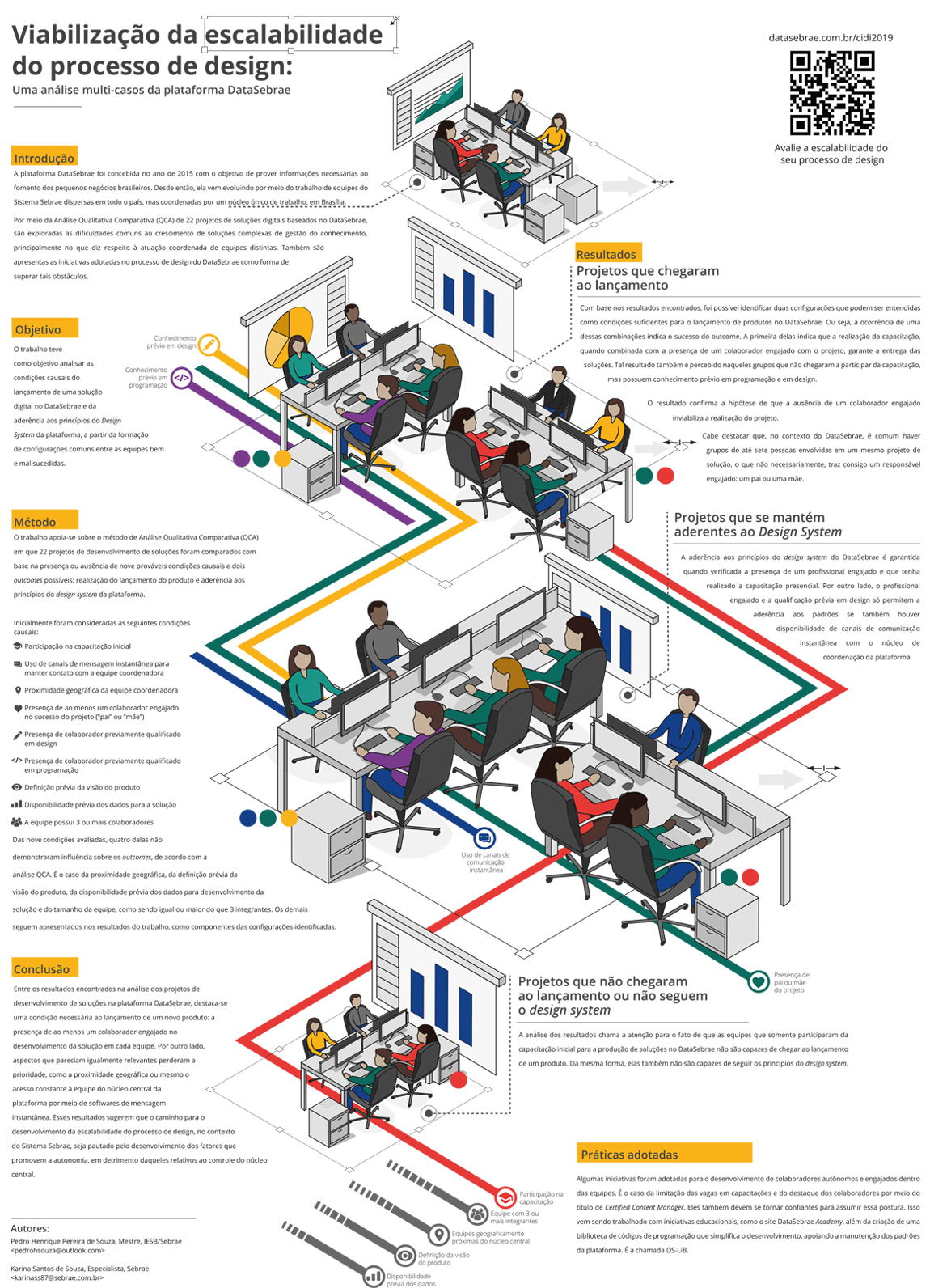How to spot the configurations of good and bad teams working on our platform?

We treat DataSebrae as a platform of innovation for knowledge management. That’s mainly because we permit teams all over the country to create and maintain their own digital solutions, without third parties.
On the other hand, those teams are distinct in many aspects. As a result, some of them do release a product, and others don’t. Some of them can follow our design principles, and others can’t.
To have a better understanding of what makes good and bad teams, in the context of our platform, we analyzed 22 projects applying the method of Qualitative Comparative Analysis QCA. It gets the best parts of qualitative research within a quantitative environment of analysis to form configurations of characteristics.
Let’s make it clearer. First, we considered 9 possible casual conditions for a team to be successful or not, as well as 2 possible expected outcomes: able or not to launch a product and able or not to follow the design principles.
Using the QCA method, we can verify what are the combinations of possible casual conditions that lead to the outcomes.
Among different resulting configurations, we found a necessary condition: each team must have at least one professional who is engaged in the operational level of development. We call them mothers or fathers of the project. This is not so obvious as it may seem. We had seen projects with 7 members or more, who were all uncles or aunts: they like to be there, they give opinions, but they don’t change the diapers.
We also noticed that having parents is not enough, even though sine qua non. The configurations for success also include casual conditions like previous knowledge on design and development or participation in our course on how to create solutions for DataSebrae.
Also important was to recognize the characteristics that are not crucial for the outcomes. The geographic distance from us, for example. We used to think that teams that are in the same building as we are would do better. Not true. Distant teams could do a great job, while the same building ones could have a bad performance. It also applies to the number of members, the existence of a previous definition of the product, and other aspects.
After all, the research work was accepted in the International Congress of Information Design (CIDI 2019), as an analysis for the scalability of our design process. And we have adopted various strategies to have all the teams successful in their solutions.
